Hasegawa 1/350 USS Gambier Bay
|
KIT #: |
40027 |
|
PRICE: |
7520 yen or less at
www.hlj.com
|
|
DECALS: |
One option |
|
REVIEWER: |
Tom Cleaver |
|
NOTES: |
Hasegawa photoetch
set used. Be sure you have
your Optivisor with the highest-magnification lenses. |
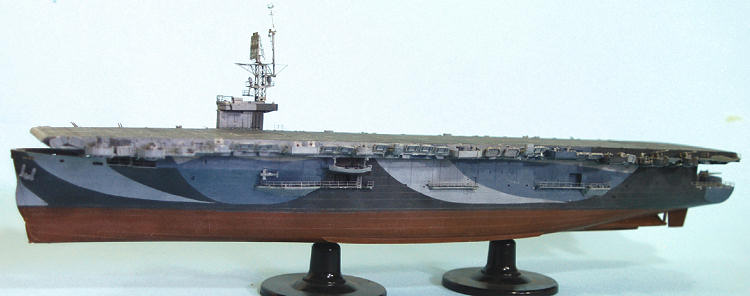
In 1944, a journalist traveling aboard the USS White Plains wrote,
“A jeep carrier bears the same relation to a normal naval vessel that is borne
to a district of fine homes by a respectable, but struggling, working class
suburb. There is a desperate effort
to keep up appearances with somewhat inadequate materials and not wholly
successful results.” Known as “jeep carriers,” “Woolworth flattops,” “Kaiser
coffins” and “one-torpedo ships,” the joke went around that CVE stood for the
three most salient characteristics of an escort carrier: combustible, vulnerable
and expendable.
The
Casablanca
class escort carriers were adapted from the
Liberty
ship design by the Kaiser Shipbuilding Company and were the first escort
carriers designed and built as such from the keel up.
Using a new submerged arc welding technique, a
Liberty
ship could be built in an average 42 days. Given the need for carriers that
could escort convoys and provide aerial antisubmarine protection, in 1942 Henry
Kaiser proposed to the Navy a conversion of the Liberty ship to create a small
aircraft carrier capable of fulfilling that role, promising fast production in
the numbers necessary to provide what was essentially secondary naval air power.
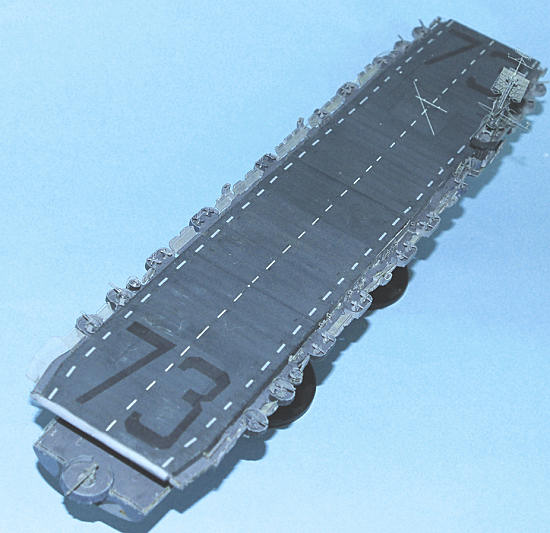 However brilliant the means of construction, however, Kaiser took
shortcuts on materials and components.
An escort carrier had fewer watertight compartments than any other
warship. Power was provided by
inexpensive and idiosyncratic Skinner Uniflow steam engines rather than
turbines, which did not conform to Navy specifications and were unknown by the
young engineering sailors being graduated from the Navy’s schools.
The thin steel the ships were built of was high in sulfur and phosphorus,
and quite brittle, which meant that when hit, it would burn quickly and break up
fast, as happened to the USS Liscome Bay, torpedoed by a Japanese
submarine on November 24, 1943 and sunk within 10 minutes.
Additionally, the ships were built without blower systems to ventilate
the lower compartments; the crews suffered whether they were in the freezing
North Atlantic or the sweltering South Pacific.
Between November 3, 1942 and July 8, 1944, Kaiser’s shipyards built and
launched fifty Casablanca class escort carriers, making them the most
numerous class of aircraft carriers ever, and nearly one-third of the carriers
built by the United States during the war.
However brilliant the means of construction, however, Kaiser took
shortcuts on materials and components.
An escort carrier had fewer watertight compartments than any other
warship. Power was provided by
inexpensive and idiosyncratic Skinner Uniflow steam engines rather than
turbines, which did not conform to Navy specifications and were unknown by the
young engineering sailors being graduated from the Navy’s schools.
The thin steel the ships were built of was high in sulfur and phosphorus,
and quite brittle, which meant that when hit, it would burn quickly and break up
fast, as happened to the USS Liscome Bay, torpedoed by a Japanese
submarine on November 24, 1943 and sunk within 10 minutes.
Additionally, the ships were built without blower systems to ventilate
the lower compartments; the crews suffered whether they were in the freezing
North Atlantic or the sweltering South Pacific.
Between November 3, 1942 and July 8, 1944, Kaiser’s shipyards built and
launched fifty Casablanca class escort carriers, making them the most
numerous class of aircraft carriers ever, and nearly one-third of the carriers
built by the United States during the war.
In the Pacific, escort carriers did yeoman’s work, ferrying aircraft to
and from the war zone, replacing losses in the air groups of the fast carrier
task forces, as well as providing extended close air support for the various
Pacific island invasions from Tarawa on, also providing anti-submarine patrols
and convoy escort as their Atlantic sisters did.
The one thing a CVE was not supposed to do was participate in a major
fleet battle.
USS Gambier Bay and
the US Navy’s Finest Hour:
USS Gambier Bay, CVE-73, was launched at the Kaiser shipyard in
Vancouver, Washington - where all Casablanca-class CVEs were built - on November
22, 1943 and commissioned on December 28, 1943.
Her crew, like those of all the other CVEs, was “Democracy’s Navy”:
overwhelmingly they were reservists, drawn from every part of the United States.
The majority had never seen a ship prior to their Navy service and many
had never been to sea until they reported aboard Gambier Bay.
Their average age was 21.
The core of the crew were the Chiefs, most of whom were Regulars; the officers
were almost all wartime “90-day wonders” and pre-war reservists, other than her
commander, Captain Hugh H. Goodwin, who was an Annapolis graduate.
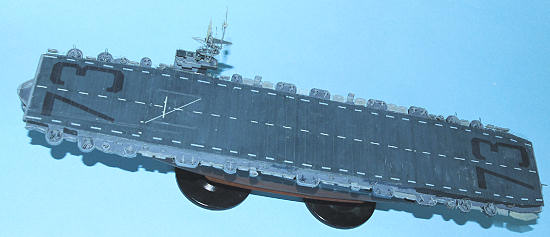 After a brief shakedown cruise, Gambier Bay left Pearl Harbor on
February 7, 1944, to rendezvous off the Marshalls with USS Enterprise and
provide 84 replacement aircraft.
After several other ferry runs between the west coast and the war zone, she
joined Carrier Support Group 2 in May, to prepare for the Marianas invasion.
During all this time, Captain Goodwin exercised the crew with several
General Quarters drills every day.
By the time Gambier Bay was sent to combat, she was as squared-away a
warship as there was in the Pacific Fleet.
Composite Air Group 10 joined Gambier Bay at this time, operating a mix
of 28 FM-2 Wildcats and TBM-1C Avengers.
After a brief shakedown cruise, Gambier Bay left Pearl Harbor on
February 7, 1944, to rendezvous off the Marshalls with USS Enterprise and
provide 84 replacement aircraft.
After several other ferry runs between the west coast and the war zone, she
joined Carrier Support Group 2 in May, to prepare for the Marianas invasion.
During all this time, Captain Goodwin exercised the crew with several
General Quarters drills every day.
By the time Gambier Bay was sent to combat, she was as squared-away a
warship as there was in the Pacific Fleet.
Composite Air Group 10 joined Gambier Bay at this time, operating a mix
of 28 FM-2 Wildcats and TBM-1C Avengers.
On June 15, 1944, when General Quarters sounded it wasn’t a drill.
The ship and her air group began providing close air support for the
invasion of Saipan. On June 17,
during what came to be known as “The Marianas Turkey Shoot,” Gambier Bay
operated the combat air control for Support Group 2 and guided the Wildcats in
shooting down 47 Japanese aircraft intent on attacking the task group.
Following this, the carrier provided support for the invasion of Tinian
until the end of July and then the final act of the battle for Guam in August.
Between September 15-28, 1944, Gambier Bay supported the invasion
of Peleliu. On October 19,
following replenishment at Manus, she joined Admiral Clifton A.F. “Ziggy”
Sprague’s carrier support group, Task Group 77.4.3, known by its radio call sign
“Taffy-3,” headed for the invasion of the Philippines.
Taffy-3 consisted of six CVEs - Gambier Bay, St. Lo,
White Plains, Kalinin Bay, Kitkun Bay, and flagship Fanshaw
Bay, escorted by three destroyers - Hoel, Heerman, and
Johnston - and four destroyer escorts, including the Samuel B. Roberts.
Task Force 77.4 - Taffys 1, 2 and 3 - were assigned to cover the northern
area of Leyte Gulf near the island of Samar, just south of the exit of San
Bernardino Strait, and to provide air support for the invasion of Leyte, which
began on October 24, 1944.
The Japanese had to respond to the invasion of the Philippines.
The Sho-1 Operation involved three different Japanese fleets: the
Northern Force of Admiral Ozawa’s carriers with their depleted and barely-formed
air units, which would be the “sacrifice” to draw off Task Force 38, the fast
carriers, while two fleets of surface ships, the Center Force commanded by
Admiral Kurita and composed of the battleships Musashi, Yamato,
Haruna, Kongo and Nagato along with the heavy cruisers
Nachi, Tone, Chikuma, Kumano, Maya, Myoko,
Atago, Chokai, Chitose and Takao - the most powerful surface
fleet the Imperial Japanese Navy had assembled during the war, and the Southern
Force composed of the battleships Fuso and Kirishima, headed for a
rendezvous in Leyte Gulf. Departing Brunei Bay in Borneo on October 22, the
Central Force was to thread the Palawan Passage,
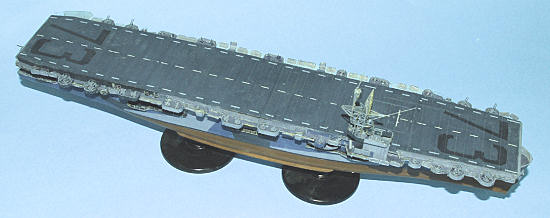 cross the
Sibuyan Sea, traverse San Bernardino Strait, and emerge into Leyte Gulf to
attack the invasion fleet, which would be accomplished in coordination with the
Southern Force, which was to enter Leyte Gulf through Surigao Strait to the
south.
cross the
Sibuyan Sea, traverse San Bernardino Strait, and emerge into Leyte Gulf to
attack the invasion fleet, which would be accomplished in coordination with the
Southern Force, which was to enter Leyte Gulf through Surigao Strait to the
south.
What became the Second Battle of the Philippine Sea, the largest naval
battle in history, began on the night of October 23, when the submarines USS
Darter and USS Dace sighted the Central Force in the Palawan Passage.
In daring night surface attacks, Darter sank the cruiser Atago
and damaged Takao so badly the ship had to turn back to Singapore, while
Dace sank the Maya.
The next day in the Sibuyan Sea, the Center Force was spotted by a search
plane from USS Intrepid, and Task Force 38 sent every strike aircraft
available after the Japanese fleet. By the end of the attacks, the battleship
Musashi was sinking and other ships had been damaged.
The last American aircraft saw the Japanese turn back, and it was assumed
they were out of the battle.
During the day, Ozawa’s air groups attacked the US Fleet, largely without
success other than the single dive bomber that put a single bomb into the light
carrier USS Princeton, eventually sinking her.
Late that afternoon, search planes from Task Force 38 sighted Ozawa’s
carriers off Cape Engano in northern Luzon.
The night of October 24, Admiral Jesse Oldendorf’s old battleships -
raised from the mud of Pearl Harbor after being sunk on December 7 - exacted
their revenge in the Battle of Surigao Strait, destroying the Japanese Southern
force, with both battleships sunk.
Task Force 38 commander “Bull” Halsey was faced with a decision: the
Southern Force had been destroyed, the Center Force had been struck so hard that
it had turned back. Now was the time to
finish things once and for all with the Japanese carriers.
He then made the greatest mistake of any American naval commander in
battle, when he failed to leave the new, fast battleships of Task Force 34 under
Admiral Willis Lee in Leyte Gulf as “insurance,” while the carrier striking
force headed north to get the Japanese carriers, unaware they had been lured
away from the decisive battle.
Unknown to the Americans, Admiral Kurita had turned back into the battle
at dusk. The Central Force
transited San Bernardino Strait under cover of darkness, and emerged into Leyte
Gulf at dawn.
Taffy-3, the northernmost of the three Taffys, was preparing to launch
the morning search when smoke was detected on the northern horizon.
A quick launch of two TBMs brought the terrible news within minutes: the
mightiest surface fleet of the Japanese Navy was bearing down on 18 jeep
carriers, nine destroyers, and twelve DE’s, with air groups equipped to provide
close support, not to attack major heavy fleet units.
Admiral Sprague ordered his three destroyers to attack against hopeless
odds. USS Johnston, under
her CO, Commander Earnest Evans, steamed alone toward the Japanese.
After 30 minutes under fire, the Japanese found Johnston and hit
her hard, knocking out the starboard engine room, halving her speed, and taking
out the two after gun mounts. Evans
continued his attack and launched ten torpedoes at the enemy before retiring.
As Johnston retreated, she encountered Heerman and Hoel,
heading in on their attack. Evans
could have continued on and no one would have ever faulted him, but instead
Johnston turned back toward the enemy, making smoke to help hide her
compatriots. Bringing up the rear
of this naval “Charge of the Light Brigade” was the “Sammy B” as little USS
Samuel B. Roberts was known to her crew.
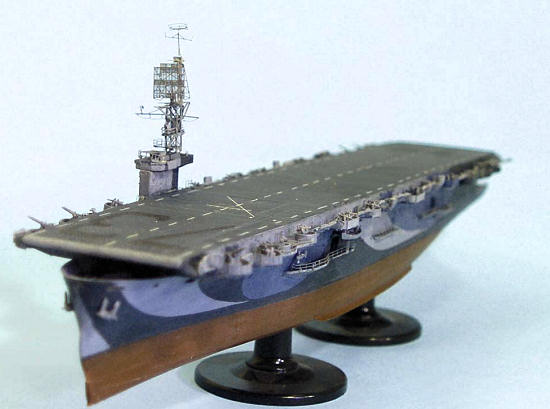 While three destroyers and a destroyer escort headed full speed at the
Japanese battle fleet, the carriers launched their airplanes, ordered to attack
the Japanese regardless of the fact they had no torpedoes or armor-piercing
bombs. The FM-2s swept down,
strafing the ships, while the TBMs dropped high explosive bombs and strafed.
While three destroyers and a destroyer escort headed full speed at the
Japanese battle fleet, the carriers launched their airplanes, ordered to attack
the Japanese regardless of the fact they had no torpedoes or armor-piercing
bombs. The FM-2s swept down,
strafing the ships, while the TBMs dropped high explosive bombs and strafed.
When Admiral Kurita had first spotted the American escort carriers, he
thought he had found a unit of the fast carriers. While his ships shot down
American planes, destroyed Johnston and Samuel B. Roberts, and
severely damaged Hoel and Heerman, he was amazed by the audacity
of their attacks.
Tone and Chikuma, followed by Chokai and Kumano,
making 32 knots and followed closely by the battleships Yamato and
Haruna, surged toward the retreating American carriers.
The CVEs had a top speed of 17 knots, and their sole surface defense
armament consisted of a 5-inch/38 caliber gun in an open mount on their stern.
Gambier Bay was the last carrier in line, nearest the advancing
Japanese.
At 0840, Tone found the range.
As 8-inch shells plastered the ocean around Gambier Bay, her lone
5-inch weapon opened fire on the Japanese cruiser, to no effect. At 0847, the
first shell struck Gambier Bay in the starboard engine room.
The second hit the fueled aircraft in the hangar deck. Battleship shells
passed through her without exploding, since the thin steel she was made of
wasn’t enough to stop them. By 0900 she was dead in the water as Tone,
Chikuma and Chokai closed in.
Her men fought the sea and the enemy fire to save their ship and died at
their stations. At 0907, Gambier Bay capsized and sank under the combined
fire of the three heavy cruisers, leaving 800 survivors struggling in the water.
She was the only American aircraft carrier ever sunk in a surface
engagement. As she slipped beneath
the waves, her surviving airplanes headed toward the newly-liberated field at
Tacloban, to refuel and rearm and return to the battle.
As the Japanese cruisers moved closer, USS White Plains opened
fire with her 5-inch “popgun,” and scored six hits on Chokai from 11,700
yards, maximum range, one of which
exploded the cruiser’s starboard torpedoes and sank her.
No other US aircraft carrier ever sank an enemy combat vessel by gunfire.
Taffy-2 and Taffy-1 launched their aircraft against the enemy fleet, to
the same effect as the attacks by Taffy-3.
However, the combination of the audacious destroyer attacks and the
hounding of his fleet by aircraft convinced Admiral Kurita that he faced the
main part of the American fleet.
Never a believer in the possibility of success in this battle, Kurita decided
that honor had been served, and American ships had been sunk.
Incredibly, at 0945, when he could have sailed on into Leyte Gulf
completely unopposed by any force capable of stopping him and sunk the entire
American invasion fleet, Kurita turned around and re-entered San Bernardino
Strait. By 1030, the Battle Off Samar
was over. When Admiral Sprague
realized the Japanese were retiring, he turned to the Captain of Fanshaw Bay
and said “I expected to be swimming by now, with any luck.”
The trial of Taffy-3 was not yet over. Later that morning, sailors aboard
the surviving ships watched in amazement as a single Japanese airplane dove into
USS St. Lo, turning her within minutes into a flaming wreck.
The first blow of the worst threat the US Navy would face in World War II
- the Kamikaze - had struck.
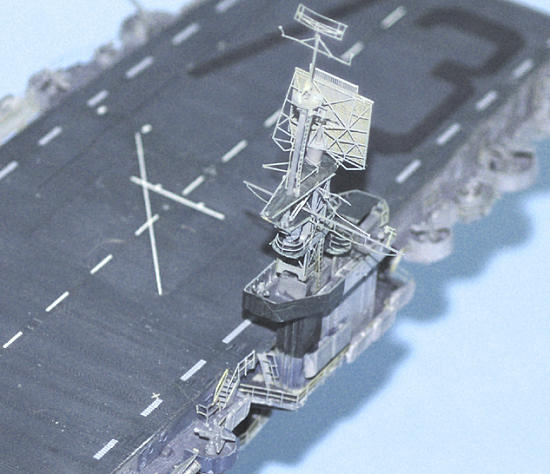 Had the Battle Off Samar gone differently, had Kurita’s fleet surged past
the survivors of sunken ships struggling in the waters off Samar and gone on to
destroy the invasion fleet, the sinking of the cruisers in the Palawan Passage,
the sinking of Musashi in the Sibuyan Sea, the destruction of the
Southern Force in Surigao Strait, the sinking of the carriers off Cape Engano -
all would have been for nought. The sacrifice by “Democracy’s Navy,” the
reservist sailors and small ships that were not supposed to face such a battle
force, had stopped the greatest surface fleet the Japanese ever sent to sea and
prevailed. It was the US Navy’s
finest hour.
Had the Battle Off Samar gone differently, had Kurita’s fleet surged past
the survivors of sunken ships struggling in the waters off Samar and gone on to
destroy the invasion fleet, the sinking of the cruisers in the Palawan Passage,
the sinking of Musashi in the Sibuyan Sea, the destruction of the
Southern Force in Surigao Strait, the sinking of the carriers off Cape Engano -
all would have been for nought. The sacrifice by “Democracy’s Navy,” the
reservist sailors and small ships that were not supposed to face such a battle
force, had stopped the greatest surface fleet the Japanese ever sent to sea and
prevailed. It was the US Navy’s
finest hour.
Halsey’s carriers did sink the useless Japanese carriers; Halsey himself
narrowly missed sinking his career by his failure to leave Task Force 34 in
Leyte Gulf. The US Navy quietly
passed its verdict on its most famous sailor of the war in the fact that while
after the war there was a Spruance class of destroyers, there was never a
Halsey class of anything.
Of the 11 US carriers of all types lost during the war, six were escort
carriers and five were Casablancas. Despite the important role of the these
ships during the war and the outstanding achievements of several individual
CVEs, such as USS Guadalcanal’s capture of U-505, the first enemy ship
taken on the high seas by the US Navy since the War of 1812, not one of these
modest but frequently heroic ships was preserved for historic display.
When the USS George Washington, CV-73, was launched, the survivors
of Gambier Bay asked her to take on the tradition of their ship, which
the mighty attack carrier was proud to do.
I truly never thought we would see an escort carrier released by any
mainstream manufacturer in 1/350.
There have been a couple of expensive resin kits released in past years, but
this kit makes all of those redundant on account of price and buildability.
It really isn’t surprising, however, that it would be a Japanese company
like Hasegawa that would make a kit of this particular ship.
Culturally, the Japanese hold great respect for warriors who fight
against overwhelming odds and prevail as a result of their sacrifice, and that
is definitely the story of Gambier Bay.
I have never seen a kit with a booklet providing the history of the
subject matter that was more complete and more respectful in its treatment of
the topic than the special booklet Hasegawa included in this kit. They also
include a 20" x 24" full color poster of the ship in combat during the Battle
Off Samar, which I have never seen before in any other release.
While the kit is specifically a model of USS Gambier Bay, anyone
who wanted to do any other Casablanca-class CVE and had the necessary
information for any detail differences would have no difficulty; pretty much all
of the Casablanca class were closely similar, so it would not be
difficult to do USS Guadalcanal, the ship that led the capture of U-505, for
instance. The main
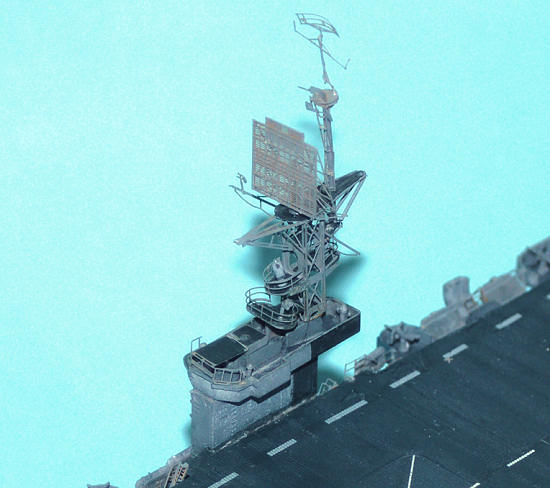 detail
difference would be painting the aircraft in the Atlantic ASW scheme, and the
particular camouflage applied to the ship itself in that instance.
detail
difference would be painting the aircraft in the Atlantic ASW scheme, and the
particular camouflage applied to the ship itself in that instance.
While all the parts are very nice, the very complete photoetch sheets
sold separately really do improve things. For instance the mast and radar array
looks to be made of granite in the injection plastic parts, while the delicate
photoetch parts really bring the area to life.
That said, more than a bit of the photoetch is “overkill.”
I made one attempt at assembling the photoetch bits for a 20mm cannon,
and even in 1/350 scale, wearing 325+ reading glasses and using the
highest-magnification Optivisor, the parts were far too small for me to see
adequately to control; ditto for the gunner seats and gunsights of the 40mm
mounts. I did however manage to use
everything else, such as the safety screens to the sides of the flight deck, and
their presence really improves things.
The kit provides three Avengers and six Wildcats.
There is an extra set of aircraft that allow you to double that number,
which I used here; one could get enough of these sets to do an entire 28-plane
composite squadron (16 FM-2 and 12 TBM). The FM-2 and TBM-1C aircraft are really
models in themselves, despite their small size.
They provide the option of being built with wings folded or extended,
with separate landing gear parts, and a full decal sheet that allows one to
create each individual aircraft of VC-10, with a fully-detailed instruction
sheet to allow you to know which airplane had what markings.
I got the extra aircraft set separately, in order to have enough
airplanes on deck to make it look good, and found that this set includes six
SBD-5s, which were never used on Gambier Bay, but would be very useful for
anyone doing a World War II fleet carrier.
This is one kit where you really want to follow the instructions.
Hallelujah that the instructions are among Hasegawa’s best, making that
an easy task.
I found it best to assemble the hull and the flight deck as separate
sub-assemblies, to be painted before being put together. I painted everything as
I went along.
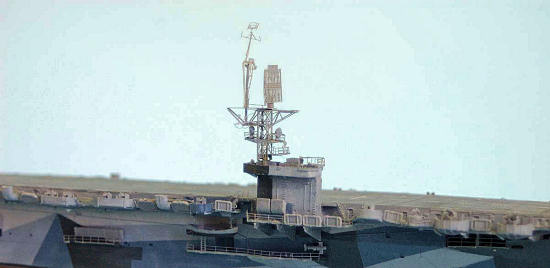 With the flight deck, once I had it painted using Tamiya “Field Blue,” I
applied a coat of Future and proceeded to do the decals.
With the deck well detailed in engraved detail, this meant that it was
going to be important to get the decals to settle in completely.
I did not stint on the use of Micro-Sol, applying a coat before laying
each decal down, another coat over it, and yet another as necessary after the
first had set. I also used a
brand-new #11 X-acto blade to slice the large #73 decals, applying more
Micro-Sol, and ending up with a coat of Solvaset over the entire deck.
The result was a deck with no decal silvering whatsoever.
With the flight deck, once I had it painted using Tamiya “Field Blue,” I
applied a coat of Future and proceeded to do the decals.
With the deck well detailed in engraved detail, this meant that it was
going to be important to get the decals to settle in completely.
I did not stint on the use of Micro-Sol, applying a coat before laying
each decal down, another coat over it, and yet another as necessary after the
first had set. I also used a
brand-new #11 X-acto blade to slice the large #73 decals, applying more
Micro-Sol, and ending up with a coat of Solvaset over the entire deck.
The result was a deck with no decal silvering whatsoever.
Hasegawa provides masks to be used to do the camouflage.
I found these impossible to use by themselves, and ended up getting a
2-inch wide roll of Kabuki tape (which is what Tamiya tape really is), drawing
it onto the tape and then cutting out each mask and applying it in turn as I put
on the four different colors. This
was an involved process that took a week of evenings, doing one color at a time.
The mast and radar array was a full-scale project in and of itself.
There are over 100 parts to this assembly, all in photoetch.
I worked slowly, using both Gator Glue and cyanoacrylate glue as
appropriate. The mast, which
measures a whole 1:1 inch and a half from top to bottom, was completed in about
12-14 hours over a weekend.
The photoetch mast is impressive looking, but
extremely fragile. Once you have assembled and painted it, set it aside to be
the last thing you attach to the model after doing everything else. After you do
this, never put your hand within two inches of the mast, or breathe heavily in
its direction.
The airplanes are completed, but are not shown here, because they will
not be attached until I can make a glass display case for the model, since the
last thing I will want to deal with is 22 1/350 airplanes glued on the deck,
with about 100 1/350 crew
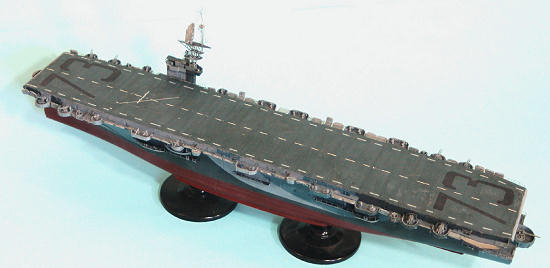 members at
their various stations to recreate the moment when the dawn patrol was launched
on October 25, 1944, and dust. The
same is also true for the rigging in the mast.
So far as the air group is concerned, the Avengers are all in the
tricolor scheme, while four of the
Wildcats are in the tricolor scheme with the rest being Glossy Sea Blue,
representing the new FM-2s that Gambier Bay took on as replacements at
Manus after the Peleliu invasion in preparation for the Philippines invasion.
members at
their various stations to recreate the moment when the dawn patrol was launched
on October 25, 1944, and dust. The
same is also true for the rigging in the mast.
So far as the air group is concerned, the Avengers are all in the
tricolor scheme, while four of the
Wildcats are in the tricolor scheme with the rest being Glossy Sea Blue,
representing the new FM-2s that Gambier Bay took on as replacements at
Manus after the Peleliu invasion in preparation for the Philippines invasion.
Doing all the photoetch railings and other small detail was the work of
an hour or so over various evenings for several weeks.
While the model was “in process” over about seven months, it was probably
completed in about 120 hours, done here and there while working on other
projects. I have resolved as a
result of this project that any other ship models will receive primary priority
from beginning to end, because momentum is really necessary.
Stopping and starting with a few weeks in between really made things go
much slower overall than they would have otherwise.
This is easily the most detailed ship model I have done (and will be even
moreso when finally completed for display), and one that has given the greatest
satisfaction with the final result.
Gambier Bay fully deserves to sit next to heroic ships like USS San Francisco
and USS Laffey as she does.
The kit is worth its price, including the photoetch set, and is recommended for
“serious ship modelers” to get the maximum from it.
If you’re ready to step up to a first “serious ship” project, this would
be a good one to consider.
Highly recommended.
Tom Cleaver
Review kit
courtesy of HobbyLink Japan. Order
yours at: http://www.hlj.com/product/HSGZ27
If you would like your product reviewed fairly and fairly quickly, please contact the editor or see other details in the
Note to
Contributors.
Back to the Main Page
Back to the Review
Index Page




 cross the
Sibuyan Sea, traverse San Bernardino Strait, and emerge into Leyte Gulf to
attack the invasion fleet, which would be accomplished in coordination with the
Southern Force, which was to enter Leyte Gulf through Surigao Strait to the
south.
cross the
Sibuyan Sea, traverse San Bernardino Strait, and emerge into Leyte Gulf to
attack the invasion fleet, which would be accomplished in coordination with the
Southern Force, which was to enter Leyte Gulf through Surigao Strait to the
south.

 detail
difference would be painting the aircraft in the Atlantic ASW scheme, and the
particular camouflage applied to the ship itself in that instance.
detail
difference would be painting the aircraft in the Atlantic ASW scheme, and the
particular camouflage applied to the ship itself in that instance.
 members at
their various stations to recreate the moment when the dawn patrol was launched
on October 25, 1944, and dust. The
same is also true for the rigging in the mast.
So far as the air group is concerned, the Avengers are all in the
tricolor scheme, while four of the
Wildcats are in the tricolor scheme with the rest being Glossy Sea Blue,
representing the new FM-2s that Gambier Bay took on as replacements at
Manus after the Peleliu invasion in preparation for the Philippines invasion.
members at
their various stations to recreate the moment when the dawn patrol was launched
on October 25, 1944, and dust. The
same is also true for the rigging in the mast.
So far as the air group is concerned, the Avengers are all in the
tricolor scheme, while four of the
Wildcats are in the tricolor scheme with the rest being Glossy Sea Blue,
representing the new FM-2s that Gambier Bay took on as replacements at
Manus after the Peleliu invasion in preparation for the Philippines invasion.